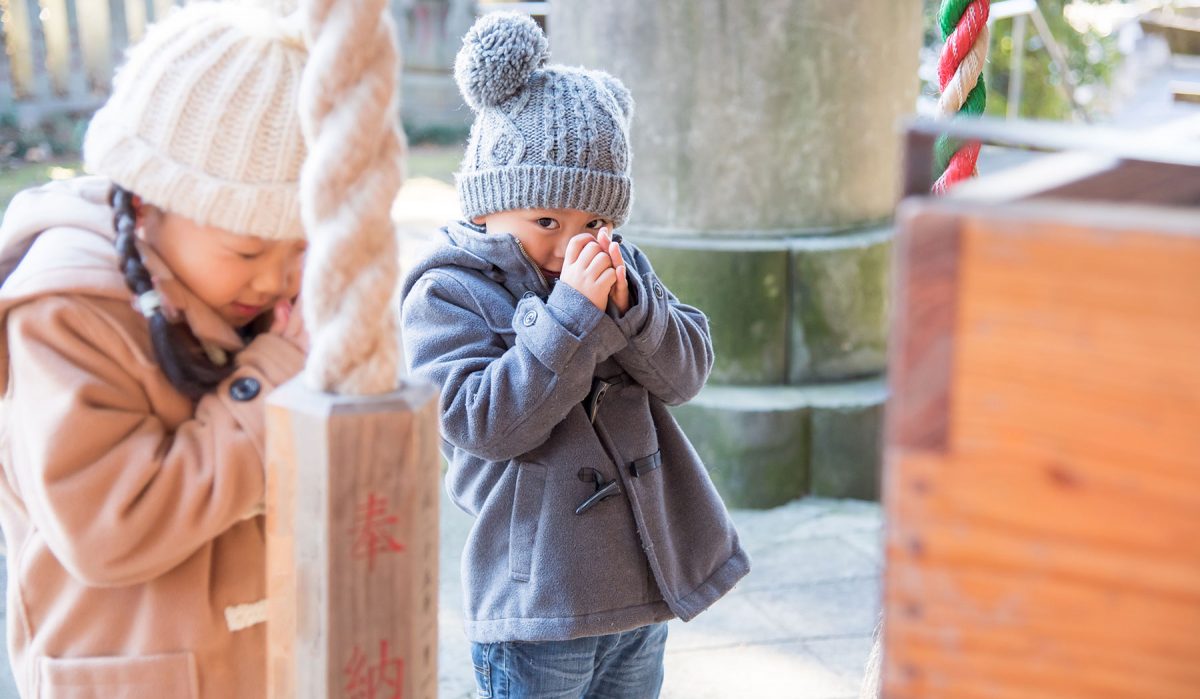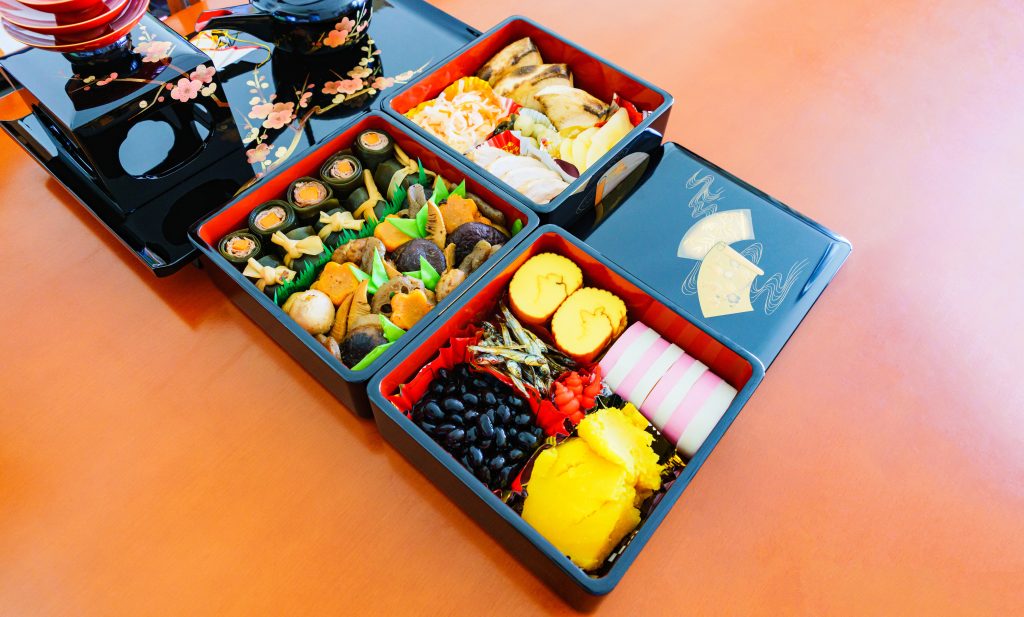O-sechi and O-zoni
Happy New Year!!
It’s traditional custom for Japanese people to eat O-sechi (traditional food for the New Year) and O-zoni (rice cake and fish based soup) during New Year’s, just as Western people enjoy eating turkey and pumpkin pie on Thanksgiving day.
SECHI originally means celebration. It is a celebration of the new year, and one of the five times a feast is mythically served to the gods.
Many different kinds of dishes (10-30 kinds) are packed in boxes called JUBAKO. The shape, pronunciation, and colour of each ingredient represent good luck, happiness and longevity.
Here are some examples of them. (see picture)
KAZUNOKO (herring roe) represents fertility because of the abundance of roe in each piece of kazunoko.
KUROMAME are black (kuro) beans (mame), and ‘mame’ means to be healthy and have the ability to work hard.
TATSUKURI (small sardine) The ‘ta’ of tatsukuri means rice paddy field, while ‘tsukuri’ is fish that is used to fertilise the rice field. Further, the grammatical base form of ‘tsukuri’ is ‘tsukuru’, which means to make. As rice is so important to the Japanese diet, its abundance results in health and prosperity. Tatsukuri is also known as GOMAME, and when written in Chinese characters, it means rice harvests of fifty thousand years.
KO-HAKU-KAMABOKO (red or pink and white fish cake) represents the sucessfulness of the rising sun.

KO-HAKU-NAMASU (sweet and tart vinegared red or orange carrot and white daikon radish) the white of the daikon represents purity and the red of the carrot shows the activeness of the sun. The combination of red and white shows happiness.
KURI-KINTON(chest nut and sweet potato paste) In Chinese characters, the kin means gold and ton means group. Therefore, this means group of gold for prosperity.
TATAKI-SU-GOBOU(vinegared patted burdock)Hoping that one’s home will be like the widely spread and firm root of the burdok (gobou). Pounding and breaking (tataite hiraku) the burdock is related to the ancient saying “Knock and the way will be opened, or open the way and get good luck.â€
KIKUKA-KABU(chrysanthemum shaped vinegared turnip) KIKU (chrysanthemum) is the symbol of the Japaense emperor, and is used for happy occasions.
RENKON (lotus root) has holes in it, through which we can see ahead to the new year.
SATOIMO or YATSU-GASHIRA (taro) gashira or kashira means a head, and an important person.
KOUBAININJIN (plum flower shaped carrot) All the plum flowers have fruits, and this wishes one to have many babies.
TAKENOKO(bamboo shoot) represents growing quickly like a bamboo shoot.
BURI-TERIYAKI (yellow tail, prepared teriyaki style) Yellow tail has different names in Japanese according to its size and age. This is similar to a person’s status in society, depending on social and professional factors.
EBI (prawn) The shape of a boiled prawn is the same as an elderly person, and this represents longevity.
OSECHI dishes are often preserved or have a long shelf life because housewives don’t work during New Year’s, which often lasts three days. Everybody usually relaxes during this time.
There are a plethora of osechi cookbooks at book stores and TV cooking shows feature this style of cooking at this time of the year. (see picture)

However, on the contrary, more and more people have begun to order their osechi dishes from department stores or restaurants. (see picture)

Some of them are astonishingly priced at 150,000yen, and they are cooked by famous traditional Japanese restaurants. These days even French and Italian restaurants cook Western style osechi,I using ingredients such as caviar, fougras, and truffles.
In the old days, the difference between festive days and normal days were quite distinct. MOCHI (rice cake) was a food eaten only for celebrations, as was O-ZONI (rice cake and soup), one of the most important foods in Japan.
Mochi was a food mythically prepared for the gods, and communities often included it in soup. Thus, ozoni was created and each region makes it differently. Whether made with meat or fish based broth, and sweet or savoury, ozoni means good luck. The shape of mochi can be square or round. A round shape portrays a precious mirror from ancient times that has no sharp corners. Everything goes smooth like the rounded lines. If the mochi is square, enemies or bad luck can be beaten with its sharp corners. The former shape is common in Kansai (a region in the south central part of Japan), originating in Kyoto, the old capital of Japan. Usually, the soup is made with white miso.The latter shape is popular in the northern part of Japan, in the Kanto area. This is where the culture of the samurai warrior originated. The picture shows the Kanto area style of ozoni with clear soup.

by: Norie Mori


One reply on “Happy Japanese New Year!”
I really appreciate your explanation of each food and what it represented to the Japanese people. Thank you for the information.